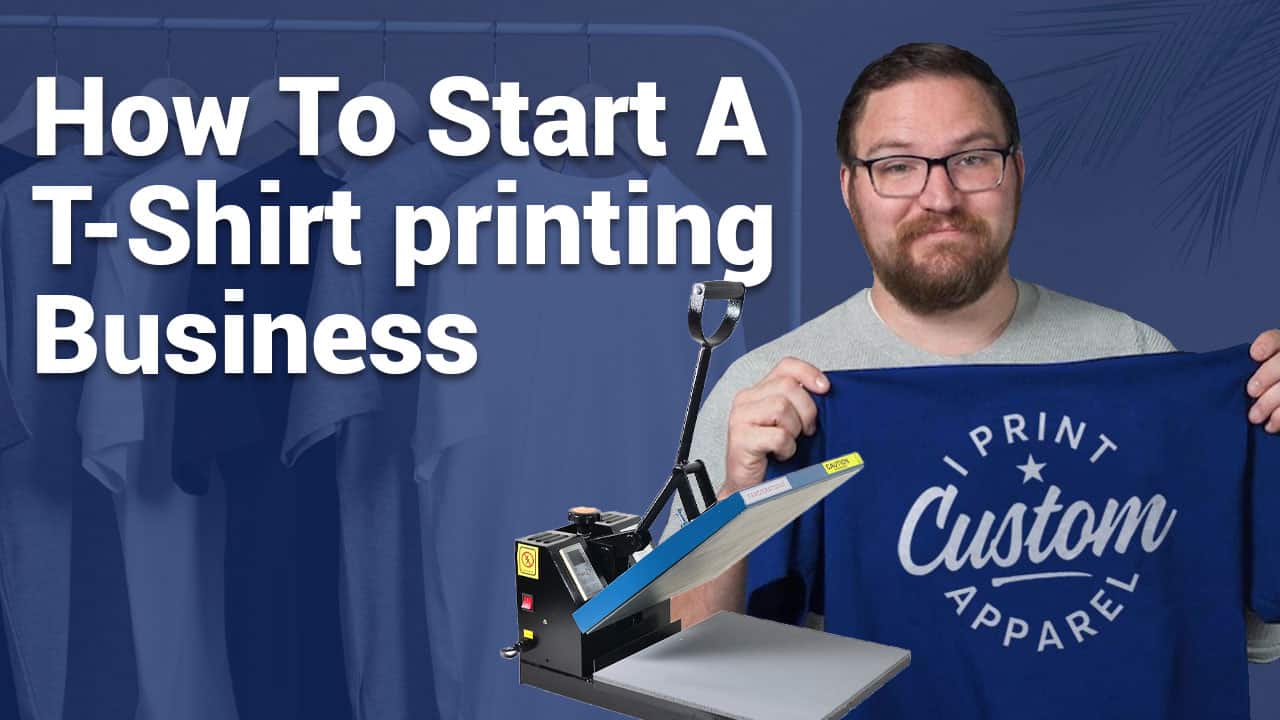
T-Shirt Printing Business : The Ultimate Starting Guide
In a world where self-expression and individuality are highly valued, custom-designed t-shirts have emerged as a powerful canvas for personal creativity and unique statements. The t-shirt has evolved from a mere garment into a walking billboard of one’s interests, beliefs, and style. This paradigm shift has given rise to an ever-growing demand for custom-designed t-shirts, making the t-shirt printing business a thriving and lucrative industry.
Exploding Demand for Custom-Designed T-Shirts:
In an era of mass production, consumers are increasingly seeking ways to stand out from the crowd. Custom-designed t-shirts offer a personalized touch that ready-made apparel cannot replicate. Whether it’s an eye-catching graphic, a witty slogan, or a beloved piece of artwork, custom t-shirts allow individuals to showcase their passions, commemorate special events, or promote their unique brand. This demand is further fueled by the popularity of pop culture references, fandoms, and social causes, creating a vibrant and diverse market for custom tees.
From small startups to established clothing brands, everyone is looking to tap into this demand for personalized apparel. Custom t-shirts have become a staple not only in wardrobes but also in marketing and promotion efforts. Companies, nonprofits, and even individuals use them as promotional tools, event giveaways, and fundraising items. This versatile canvas offers endless opportunities for businesses and individuals alike to make a statement, tell a story, or simply provide wearable art.
The Profit Potential in T-Shirt Printing Business:
The allure of the t-shirt printing business extends beyond creativity and self-expression; it’s also a realm of substantial profit potential. As the demand for custom-designed t-shirts continues to soar, entrepreneurs have the opportunity to turn their passion for printing into a profitable venture. With the right strategy and quality offerings, it’s possible to carve a niche in this industry and build a successful, sustainable business.
This article will guide you through the intricacies of starting and running a t-shirt printing business, from market research and legal considerations to equipment selection and marketing strategies. By the end, you’ll be well-equipped to embark on your journey into the world of custom-designed t-shirts and harness the potential for both creative fulfillment and financial success.
#1 T-Shirt Printing Business : Getting Started
1.1 Research and Market Analysis:
Before you dive headfirst into the t-shirt printing business, it’s crucial to embark on a journey of research and comprehensive market analysis. This stage serves as the bedrock of your business, and skipping it could lead to costly mistakes down the line.
The importance of market research: In a crowded marketplace, understanding your potential customers’ preferences, needs, and behaviors is paramount. Otherwise market research empowers you with insights to make informed decisions. It helps you identify trends, assess demand, and determine the best strategies to position your t-shirt printing business for success.
Identifying your target audience and niche: To effectively cater to your customers, you must first pinpoint who they are. For example your target audience could be sports enthusiasts, students, or a niche subculture. By identifying your audience and their unique preferences, you can tailor your designs, marketing efforts, and pricing to resonate with them.
Analyzing competitors in the t-shirt printing industry: Successful entrepreneurs understand that they don’t operate in a vacuum. Competitor analysis is key to understanding the landscape you’re entering. Therefore you must study your competitors’ strengths and weaknesses. What unique selling points do they offer, and how can you differentiate your business? This analysis can help you refine your business strategy and discover gaps in the market that you can fill.
1.2 Business Plan:
Once you’ve gathered the insights from your research and market analysis, it’s time to translate that knowledge into a well-structured business plan.
Creating a business plan for your t-shirt printing business: A business plan is your roadmap to success. It outlines your business’s mission, vision, and core values. It includes a detailed description of your products and services, a market analysis summary, and an overview of your business structure. Additionally, it provides information about your startup costs, revenue projections, and financial goals.
Setting goals and objectives: Clear and measurable objectives are the driving force behind your business. In brief, what do you aim to achieve in your first year, and where do you see your t-shirt printing business in five years? By setting specific, achievable goals, you can track your progress and adapt your strategies as needed.
Your business plan is not only a guide for your journey but a document that can help secure financing from banks or investors. It’s a dynamic tool that can evolve with your business, ensuring you stay on course and make informed decisions throughout your entrepreneurial journey.
In this comprehensive guide to starting a t-shirt printing business, these initial steps are just the beginning. With a strong foundation of research, a well-structured business plan, and clear objectives, you’re ready to move on to the next phases of acquiring equipment, creating designs, and marketing your products effectively. For that reason you must stay tuned for more insights to make your t-shirt printing business a thriving success.
#2 Legal and Financial Considerations
2.1 T-Shirt Printing Business : Business Structure:
Choosing the right legal structure for your t-shirt printing business is a crucial decision that impacts your liability, taxation, and overall business operations. It’s a step you should take seriously as it lays the foundation for your business’s legal framework.
Choosing the right legal structure: When it comes to structuring your t-shirt printing business, you have several options, each with its own pros and cons. These include sole proprietorship, partnership, limited liability company (LLC), and corporation. Your choice will affect issues like personal liability, taxes, and ease of administration. Consult with a legal professional or business advisor to determine which structure aligns best with your business goals.
Registering your business and obtaining necessary licenses: Once you’ve decided on your business structure, you’ll need to register your business with the appropriate government authorities. This process typically involves obtaining a business license and an Employer Identification Number (EIN) for tax purposes. Depending on your location, you may also need permits related to health and safety standards for operating your t-shirt printing business. Compliance with legal requirements is essential to avoid legal issues and ensure the smooth operation of your business.
2.2 Budget and Funding:
Estimating startup costs and securing adequate funding are essential steps in bringing your t-shirt printing business to life. Here’s what you need to consider:
Estimating startup costs: Creating a detailed budget is vital for understanding how much capital you’ll need to get started. Your startup costs may include purchasing or leasing equipment, acquiring initial inventory, renting or setting up a workspace, marketing and advertising expenses, and covering initial operating costs. Careful estimation of these costs will help you determine your funding requirements.
Exploring financing options: Once you have a clear picture of your startup costs, it’s time to explore funding options. These may include personal savings, loans from family and friends, traditional bank loans, or alternative sources of financing like crowdfunding or angel investors. Each option has its advantages and disadvantages, and the choice will depend on your financial situation and risk tolerance. It’s important to have a solid financial plan in place to demonstrate to potential lenders or investors that your t-shirt printing business is a sound investment.
Remember that a sound legal and financial foundation is essential for the long-term success and stability of your t-shirt printing business. By choosing the right legal structure and securing adequate funding, you’re positioning your business for a solid start. In the following sections, we’ll delve into equipment and supply considerations, design and artwork, and the production process, bringing you closer to turning your t-shirt printing business dream into a reality.
#3 Equipment and Supplies
3.1 Choosing Printing Methods:
Selecting the right printing method is a pivotal decision in the t-shirt printing business. Your choice will affect the quality of your prints, the types of designs you can produce, and the cost-efficiency of your operations.
Overview of Different T-Shirt Printing Methods:
When considering the t-shirt printing methods available for your business, it’s important to explore a range of options to find the one that best aligns with your needs and goals. Here are some of the most common methods, including the emerging DTF (Direct-to-Film) printing method:
- Direct-to-Film (DTF) Printing: DTF is an emerging method in the world of t-shirt printing. It involves printing designs onto a film, which is then transferred to the fabric using a heat press. DTF offers the flexibility to produce vibrant, high-resolution prints on various fabrics, including cotton, polyester, and blends. It’s known for its ability to reproduce intricate details and produce full-color, photorealistic designs. While it’s still gaining traction in the industry, DTF printing is becoming a popular choice due to its versatility and ability to cater to a wide range of customer demands.
- Direct-to-Garment (DTG) Printing: DTG printing utilizes inkjet technology to print designs directly onto the fabric. It excels in rendering detailed, multicolored designs and is well-suited for short runs. DTG printing provides high-quality, soft-to-the-touch prints but can be slower and requires relatively expensive equipment.
- Screen Printing: Screen printing is a classic method known for its versatility and ability to produce vibrant, long-lasting prints. It involves transferring ink through a stencil or screen onto the fabric. It’s an ideal choice for larger orders, and it can accommodate various colors and designs. However, it can be labor-intensive and may not be as cost-effective for smaller batches.
Each of these t-shirt printing methods has its own set of advantages and drawbacks. Your choice should align with your business goals, target market, and budget constraints. As the t-shirt printing industry evolves, staying informed about the latest advancements, such as DTF printing, can provide you with a competitive edge and help you meet the diverse needs of your customers.
The pros and cons of each method:
- DTF & DTG Printing Pros/Cons: Great for detailed, multicolored designs, soft-to-the-touch prints. Slower production, expensive equipment.
- Screen Printing Pros/Cons : Excellent for large orders, vibrant colors, and durability. Labor-intensive, limited color options for small runs.
3.2 Equipment and Supplies to start a T-Shirt Printing Business:
Equipping your t-shirt printing business with the right tools and supplies is essential for delivering quality products to your customers.
Listing essential equipment and supplies:
- Printing Machines: The specific type depends on your chosen method (e.g., screen printing press, heat press, DTG printer).
- Screens and Squeegees: Essential for screen printing.
- Ink and Transfer Paper: The type of ink depends on your chosen method.
- Computer and Design Software: For creating and editing designs.
- Drying and Curing Equipment: To set the ink and ensure the print’s durability.
- Work Tables, Storage, and Packaging: For organizing and presenting your products.
Sourcing quality materials and equipment:
It’s essential to invest in reliable and high-quality equipment and supplies to ensure consistent and professional results. Look for reputable suppliers who can provide you with durable machinery and materials. Consider factors like warranty, customer support, and maintenance when making your purchase decisions.
Your choice of equipment and supplies should align with your selected printing method and the scale of your operations. It’s an investment in the quality and efficiency of your t-shirt printing business. In the upcoming sections, we’ll explore the creative aspects, including design and artwork, and the practicalities of the production process, bringing you closer to realizing your t-shirt printing business vision.
#4 Design and Artwork
4.1 Creating Designs:
Design is at the heart of the t-shirt printing business. Your ability to create eye-catching, unique designs will set you apart from the competition and draw customers to your products.
Design software and tools: To create stunning t-shirt designs, you’ll need access to graphic design software and tools. Adobe Illustrator and Adobe Photoshop are industry-standard programs known for their versatility and powerful features. They allow you to create, edit, and manipulate images and text to produce the designs you envision. While these software options can be somewhat complex, they offer a wide range of capabilities for graphic design.
Additionally, there are user-friendly alternatives, like Canva and GIMP, that are accessible to beginners and budget-friendly. These tools can help you get started with design without a steep learning curve.
Finding or hiring graphic designers: If you’re not confident in your design skills or prefer to focus on other aspects of your t-shirt printing business, you can consider hiring professional graphic designers. Designers possess the expertise to translate your ideas into visually appealing and marketable designs. You can find freelance designers on platforms like Upwork or Fiverr, or you can collaborate with design agencies. When working with designers, clear communication and a detailed design brief are essential to ensure your vision is accurately brought to life.
4.2 Copyright and Licensing in T-Shirt Printing Business:
Respecting copyright laws and understanding licensing for artwork is critical in the t-shirt printing business. Failing to do so can result in legal issues that may damage your reputation and finances.
Understanding copyright laws and licensing for artwork: Copyright laws grant exclusive rights to the creators of original works, including graphic designs. It’s essential to understand these laws to avoid infringement. When using artwork or designs created by others, ensure that you have the appropriate licenses or permissions. Stock image websites and design marketplaces often provide licensing options for their content, making it easier to use them in your t-shirt designs.
Avoiding legal issues with design elements: To steer clear of legal issues, always aim to create or use original designs. When collaborating with artists or designers, have clear contracts in place that outline the ownership and usage rights of the designs. Additionally, respect trademark and intellectual property rights. Avoid using logos, images, or text that belong to other brands or individuals without permission, as this can lead to legal disputes.
Copyright and licensing can be complex, so it’s advisable to consult with a legal professional to ensure your t-shirt designs and business practices are compliant with the law. By taking the necessary steps to respect intellectual property and follow copyright regulations, you’ll not only safeguard your business but also build trust with your customers who appreciate ethical and legal practices.
With a solid understanding of design principles, access to the right design software and tools, and knowledge of copyright and licensing, you’re well-equipped to create captivating designs for your t-shirt printing business. The next steps will guide you through the printing and production process, ensuring your designs come to life on high-quality garments that will delight your customers.
#5 Printing and Production
5.1 The Printing Process:
Understanding the t-shirt printing process is fundamental to delivering high-quality products to your customers. This section provides a step-by-step guide and highlights the importance of quality control and consistency.
Step-by-step guide to the t-shirt printing process:
- Design Preparation: Begin with a well-prepared design in the appropriate file format. Ensure that your design is the right size and resolution for the desired print area.
- Garment Selection: Choose high-quality blank t-shirts that suit your customer’s preferences and the printing method you use. Ensure they are clean and free from dust or debris.
- Printing: Apply the design to the t-shirt using your chosen printing method. This process involves setting up your equipment, aligning the design, and applying the ink or transfer.
- Drying/Curing: After printing, the ink or transfer must be heat-treated to ensure the design’s durability. The curing process varies depending on the printing method.
- Quality Control: Inspect each printed t-shirt for imperfections, such as misalignment, smudges, or color inconsistencies. Address any issues before moving on to packaging.
- Packaging: Fold, package, and label the t-shirts for shipping or retail. Presentation is crucial, as it influences the customer’s first impression.
Quality control and consistency:
Quality control is a critical aspect of the t-shirt printing process. Consistency in the color, alignment, and overall print quality is key to customer satisfaction and repeat business. Implementing quality control checks at various stages of production helps catch and rectify any issues early, ensuring that only top-quality t-shirts reach your customers.
5.2 T-Shirt Printing Business : Scaling Production:
As your t-shirt printing business grows, you’ll need to adapt your production process to manage larger orders and expand your production capacity efficiently.
Managing large orders and bulk printing: Dealing with large orders requires effective organization and time management. Consider the following strategies:
- Batch Processing: Organize orders into manageable batches for streamlined production. This approach increases efficiency and minimizes errors.
- Workflow Optimization: Fine-tune your workflow to minimize downtime and bottlenecks. Invest in equipment that can handle larger volumes and explore automation options.
- Additional Staff: If necessary, hire additional staff to assist with production during peak times. Proper training is essential to maintain quality standards.
Expanding your production capacity: To accommodate increased demand, consider the following steps:
- Invest in Equipment: Upgrade or invest in more advanced printing equipment that can handle larger quantities efficiently. This may include higher-capacity heat presses, more significant screen printing setups, or additional DTG printers.
- Workforce Development: Provide ongoing training and skill development for your team to ensure they can handle increased production requirements while maintaining quality.
- Inventory Management: Keep an adequate inventory of blank t-shirts and printing supplies to prevent production delays due to shortages.
Scaling your production capacity should be a well-planned and gradual process to maintain the quality that your customers expect. As you navigate these considerations, your t-shirt printing business can meet the demand for both small and large orders while maintaining consistent quality in every print. The following sections will delve into marketing and sales strategies, guiding you toward success in the t-shirt printing industry.
#6 T-Shirt Printing Business : Marketing and Branding
6.1 Building a Brand:
In the t-shirt printing business, building a strong brand is essential for standing out in a competitive market. This section explores how to develop a compelling brand identity, create a memorable logo, and choose a brand name that resonates with your target audience.
Developing a strong brand identity: Your brand identity is the face of your t-shirt printing business. It encompasses your values, mission, and the image you project to customers. To establish a strong brand identity:
- Know Your Audience: Understand your target customers’ preferences, values, and lifestyles. Tailor your brand to appeal to their needs and aspirations.
- Define Your Unique Selling Proposition (USP): Identify what sets your t-shirt printing business apart from the competition. Highlight this unique aspect in your brand identity.
- Craft a Brand Story: Storytelling is a powerful tool for connecting with customers. Share your journey, the inspiration behind your business, and the passion that drives your creativity.
Creating a memorable logo and brand name: A well-designed logo and a memorable brand name can leave a lasting impression on your customers.
- Logo Design: Your logo should be visually appealing and reflect your brand’s personality. It should be versatile enough to work across different mediums, from t-shirts to digital marketing.
- Brand Name: Your brand name should be catchy, easy to remember, and relevant to your business. Ensure that it’s available for domain registration and social media handles.
6.2 Marketing Strategies:
Once you’ve established a solid brand foundation, it’s time to implement marketing strategies that will attract customers and promote your t-shirt printing business.
Online marketing (website, social media, email marketing):
- Website: A professional website is a cornerstone of your online presence. It should showcase your products, tell your brand story, and provide an easy way for customers to place orders. Optimize your website for search engines (SEO) to improve visibility.
- Social Media: Utilize social media platforms like Facebook, Instagram, and Pinterest to showcase your t-shirt designs, engage with your audience, and build a community around your brand. Consistent and high-quality content is key to success on social media.
- Email Marketing: Collect and segment customer email addresses to send targeted marketing campaigns. Share promotions, new product releases, and updates on your business to keep your customers engaged and informed.
Offline marketing (local events, partnerships):
- Local Events: Participate in local craft fairs, art festivals, and other community events to showcase your t-shirt printing business. These events provide valuable face-to-face interactions with potential customers and help you build a local following.
- Partnerships: Collaborate with local businesses or organizations for co-promotional opportunities. For example, design custom t-shirts for local sports teams, schools, or charity events. These partnerships can expand your customer base and enhance your brand’s reputation.
Effective marketing is an ongoing process that adapts to changes in customer preferences and market trends. By investing in your brand’s identity and utilizing a combination of online and offline marketing strategies, you’ll create a strong presence for your t-shirt printing business and increase your reach and revenue. The subsequent sections will focus on sales and distribution strategies to help you grow your t-shirt printing business even further.
#7 Sales and Distribution
7.1 T-Shirt Printing Business, Pricing Strategies:
Setting the right pricing strategy for your t-shirt printing business is crucial. This section explores the art of setting competitive prices and strategies for offering discounts and promotions.
Setting competitive prices: To determine the right pricing for your t-shirts, consider the following factors:
- Costs: Calculate your production costs, including materials, labor, overhead, and marketing expenses. This forms the baseline for your pricing.
- Market Research: Research your competitors and understand the price range for similar products. This will help you position your prices competitively.
- Value Proposition: What unique features or quality do your t-shirts offer? Price your products to reflect the value you provide to your customers.
- Profit Margin: Determine the profit margin you want to achieve. Ensure it allows you to cover costs, make a profit, and reinvest in your business.
Strategies for offering discounts and promotions: Discounts and promotions can be powerful tools for attracting customers and boosting sales. Consider these strategies:
- Seasonal Sales: Offer discounts during holidays, special events, or back-to-school seasons. For example, you can run a Black Friday sale or a Valentine’s Day promotion.
- Bundle Deals: Create bundles that encourage customers to buy multiple items. For example, offer a discount when customers buy a set of themed t-shirts.
- Loyalty Programs: Reward loyal customers with discounts or exclusive offers. Loyalty programs can encourage repeat business.
- Flash Sales: Create a sense of urgency with limited-time flash sales. This tactic can motivate customers to make quick purchase decisions.
7.2 Sales Channels:
Diversifying your sales channels allows you to reach a broader audience and adapt to changing consumer preferences. This section explores selling online through e-commerce platforms and establishing a physical retail presence.
Selling online through e-commerce platforms:
- E-commerce Website: Create an online store where customers can browse and purchase your t-shirts. Use user-friendly e-commerce platforms like Shopify, WooCommerce, or BigCommerce to build and manage your site.
- Marketplaces: Expand your online presence by selling on popular marketplaces like Amazon, eBay, or Etsy. These platforms provide access to a vast customer base.
- Social Media Sales: Utilize social media platforms to showcase your t-shirts and direct customers to your online store. Consider integrating shopping features offered by platforms like Facebook and Instagram.
- Shipping and Fulfillment: Develop an efficient shipping and fulfillment process to ensure customers receive their orders promptly. Offer various shipping options to accommodate different customer needs.
Establishing a physical retail presence:
- Brick-and-Mortar Store: If you decide to open a physical store, choose a strategic location with high foot traffic. Invest in visually appealing displays and provide excellent customer service to create a memorable in-store experience.
- Pop-Up Shops: Pop-up shops are a flexible way to test the waters of physical retail without a long-term commitment. Set up temporary retail spaces in high-traffic areas during peak seasons or special events.
- Collaborative Spaces: Consider partnering with other businesses or stores to showcase your t-shirts in their spaces. This collaboration can introduce your brand to a new audience.
Diversifying your sales channels not only increases your revenue potential but also offers customers more convenient ways to purchase your products. By implementing competitive pricing strategies and exploring various sales channels, you’ll position your t-shirt printing business for growth and success. The following sections will cover challenges and solutions, helping you overcome obstacles on your entrepreneurial journey.
#8 Challenges and Solutions
8.1 T-Shirt Printing Business, Common Challenges:
The t-shirt printing business, like any other industry, comes with its fair share of challenges. This section addresses two common hurdles: dealing with competition and handling customer complaints and returns.
Dealing with competition: The t-shirt printing industry is highly competitive, with many businesses vying for customers’ attention. To address this challenge:
- Differentiate Your Brand: Focus on what makes your t-shirt printing business unique. Whether it’s your design style, quality, or customer service, highlighting your distinct qualities can set you apart from the competition.
- Niche Targeting: Consider specializing in a specific niche or theme, which can help you attract a dedicated customer base with specific interests or needs.
- Consistent Innovation: Stay updated with the latest design trends, printing methods, and marketing strategies. Regularly introducing new designs and products keeps your business fresh and engaging.
Handling customer complaints and returns: Dealing with customer complaints and returns is an inevitable part of retail. Here’s how to approach it effectively:
- Clear Return Policy: Establish a transparent and fair return policy that outlines the conditions under which customers can return or exchange products. Communicate this policy clearly on your website and in your store.
- Responsive Customer Service: Address customer inquiries and complaints promptly and professionally. Excellent customer service can turn a dissatisfied customer into a loyal one.
- Quality Control: Implement rigorous quality control measures to minimize issues that lead to returns. Ensure that your products are inspected for defects before they reach the customer.
8.2 Solutions and Growth:
To overcome challenges and continue growing your t-shirt printing business, consider these strategies:
Strategies for overcoming challenges:
- Continuous Learning: Stay up-to-date with industry trends and technology. So try to attend trade shows, workshops, and online courses to expand your knowledge and skills.
- Market Expansion: Look for opportunities to explore new markets or niches. In addition of considering collaborations with influencers or other businesses to reach a broader audience.
- Customer Feedback: Gather feedback from customers and use it to improve your products and services. Customer insights can be a valuable resource for growth.
Scaling your t-shirt printing business:
- Automation: As your business grows, consider automating repetitive tasks to increase efficiency. This can include order processing, inventory management, and even parts of the printing process.
- Invest in Equipment: Upgrade your equipment to handle larger volumes and improve quality. Consider investing in faster or more versatile printing machines as your business expands.
- Team Expansion: If you’re struggling to meet demand, hire additional staff or outsource certain aspects of your business. A skilled team can help you maintain high-quality production.
- Diversify Product Line: Consider expanding beyond t-shirts to offer related products like hoodies, tote bags, or custom apparel for other markets. Diversification can drive growth and profitability.
Challenges in the t-shirt printing business are opportunities for growth and improvement. By differentiating your brand, handling customer concerns effectively, and implementing strategies for scalability, you’ll be better equipped to overcome obstacles and achieve continued success in the industry. Consequently your journey in the world of t-shirt printing is an ongoing adventure with the potential for creativity, financial gain, and personal fulfillment.
Conclusion:
Embarking on the journey of starting a t-shirt printing business offers a world of creative possibilities, entrepreneurship, and the potential for financial success. Therefore In this comprehensive guide, we’ve explored the key elements that are integral to the growth and prosperity of your venture.
Key Takeaways:
- Understanding the Market: Market research and competitor analysis are vital steps in identifying opportunities and tailoring your offerings to meet customer demands.
- Building a Strong Foundation: A well-thought-out business plan, legal structure, and adequate funding set the stage for a successful t-shirt printing business.
- Equipment and Supplies: Carefully choosing your printing method, equipment, and supplies is essential to producing high-quality, marketable products.
- Design and Artwork: Developing a unique brand identity and complying with copyright laws are key to creating appealing designs that resonate with customers.
- Printing and Production: Understanding the printing process, quality control, and scaling production are crucial to delivering high-quality products consistently.
- Marketing and Branding: Effective online and offline marketing strategies and a strong brand presence can attract and retain a loyal customer base.
- Sales and Distribution: Diversifying your sales channels, setting competitive prices, and exploring discounts and promotions can expand your reach and revenue.
- Challenges and Solutions: Competition and customer complaints are common challenges, but differentiation, responsive customer service, and innovation can help you overcome them.
Encouragement to Pursue Your Dreams:
Starting a t-shirt printing business is not only about making a living but also about unleashing your creativity and sharing it with the world. The t-shirts you produce can become canvases for your artistic expression and a means to convey powerful messages. Your business can become a platform for showcasing your unique designs and reaching people who resonate with your vision.
Through dedication, innovation, and unwavering commitment, your t-shirt printing business has the potential to grow beyond your wildest dreams. The satisfaction of seeing your designs come to life, the joy of satisfying customers, and the pride in building a successful brand are all within reach.
So, to all aspiring entrepreneurs and creative minds out there, take the knowledge and insights you’ve gained from this guide and start your t-shirt printing business journey. Embrace the challenges, celebrate the victories, and let your passion and creativity shine through your designs. Your t-shirt printing business dream is waiting to be realized, and the world is ready to wear your art. Begin today, and watch your designs make their mark on the world, one printed t-shirt at a time.



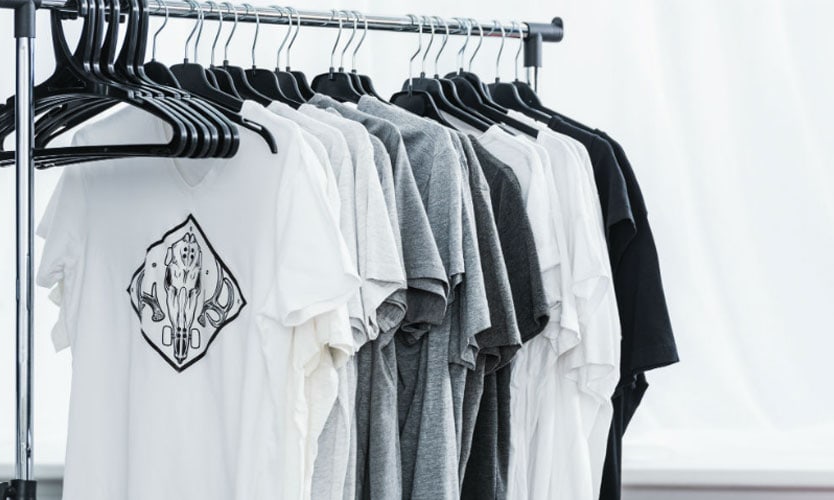
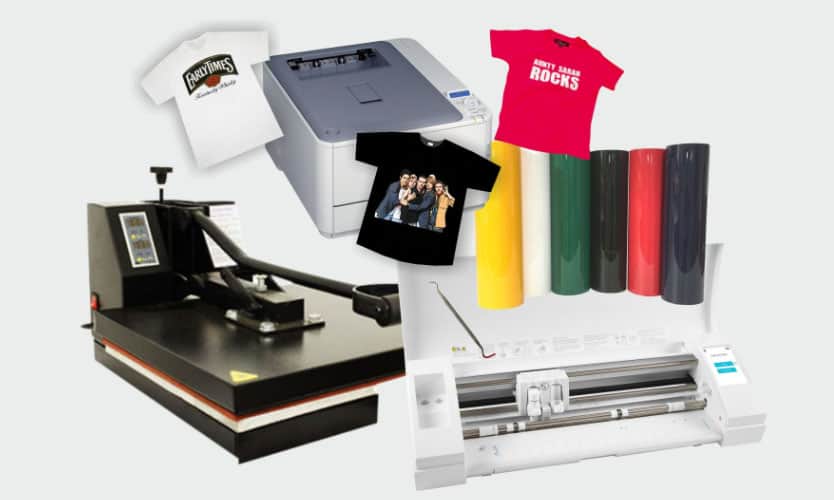

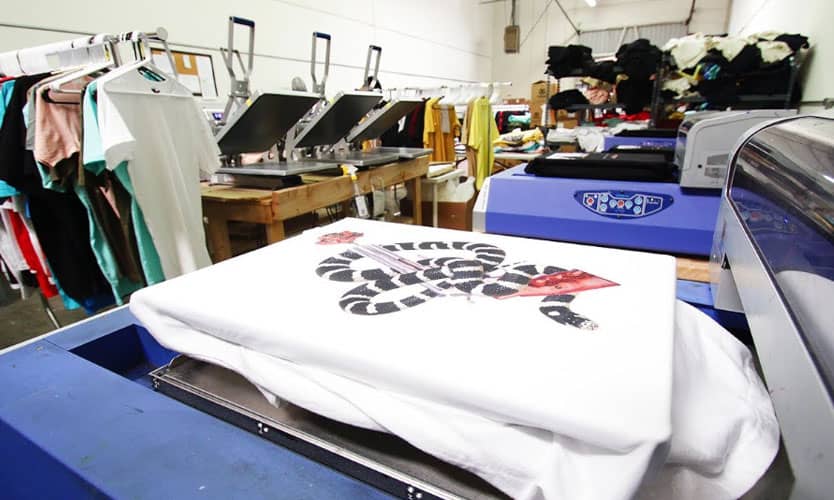

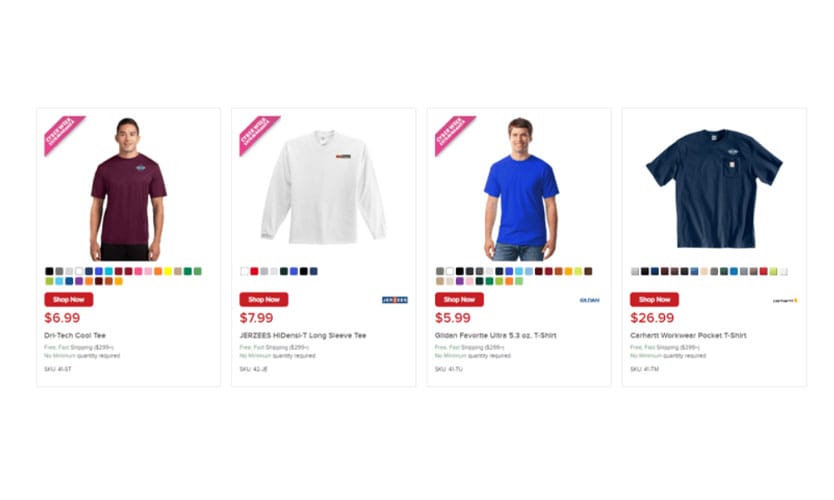






Keith Harris
I love this information it’s help me on how to go about my business ideals